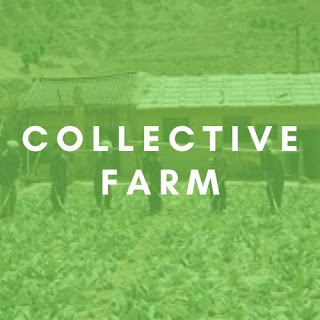Collective farm definitions
Collective farm definition 1: Collective farm consists of several small jointly operated properties, especially state-owned.
Collective farm definition 2: A farm or a group of farms organized as a unit and operated and collaborated by a group of workers under state supervision, especially in the communist state.
Collective farm definition 3: Especially in a communist country a farm consisting of many small plots of land is collected in a single unit for joint management.
Collective farm example
Collective farm example, the Soviet Union had both kolkhozy (cooperative-run farms) and sovkhozy (state-run farms).
What are the features of collective farming?
Features of collective farming :
(i) Farmers accumulate all their resources such as land, livestock, and labor. However, they allow them to maintain very small plots for crop cultivation to meet their daily needs.
(ii) The government sets annual targets, and the items are also sold to the government at preset prices.
The advantages and disadvantages of collective farming are as follows:
Advantages of collective farming-
- The faster the operation reaches a larger scale, the more it contributes.
- This simplifies engagement by reducing the risk of exit.
- By adding multiple skills, team skill sets can be combined.
Disadvantages of collective farming-
- Collective farming does not work very well.
- Such farms do not provide incentives.
- There is no chance of making yourself better by doing good and it makes the process monotonous.






0 Comments